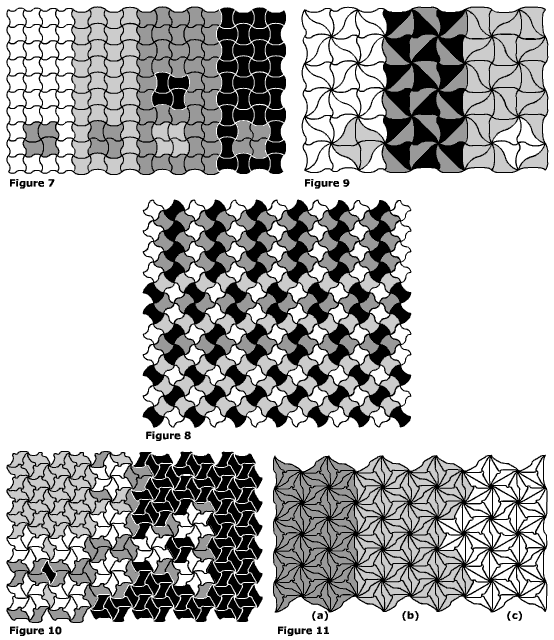
page 5
Figures 7 and 8 demonstrate how the traditional spiral tilings with an underlying square grid with S-curves alone (Figure 3a), C-curves alone (Figure 3b) and the rare tiling with S-curves and C-curves (Figure 3c) come to life and can work together when the fourth tile is added to complete the combinatoric set. The two tiles with both S-curves and C-curves act as a bridge to the other two tiles which cannot be laid next to each other. This set is natural and aesthetically very pleasing for applications as mosaics in different mediums. Other sets such as the one shown in Figure 10 are not as aesthetically pleasing and may be more of interest as challenging puzzles than used for applied art. The tiles in Figure 9 and Figure 10 can be seen as derived from the tiles in Figure 7 and Figure 10 respectively by diagonal bisection with an S-curve or a C-curve. |
